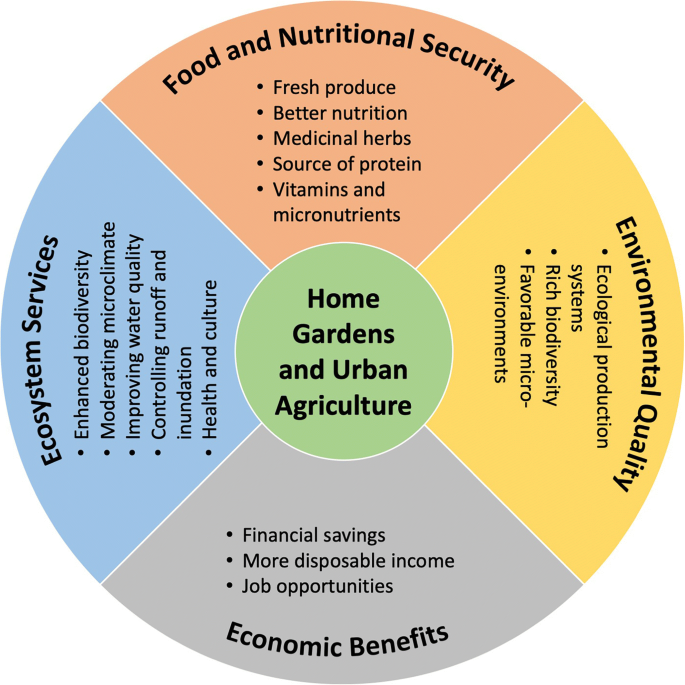Unknown Facts About City Blooming
Unknown Facts About City Blooming
Blog Article
City Blooming Fundamentals Explained
Table of ContentsCity Blooming Fundamentals ExplainedUnknown Facts About City BloomingCity Blooming for BeginnersThe Ultimate Guide To City BloomingA Biased View of City Blooming
Nature has unbelievable effects on our physical and psychological well-being, so it's no shock that a simple succulent on a desktop computer or some potted herbs on a windowsill can quickly enhance a space. Take those plants a step further, and you'll cross right into the area of city gardening, which brings a lot more advantages to people and areas alike.What Are Urban Gardens?Urban horticulture, sometimes known ascity gardening, is defined as "the process of cultivating eco-friendly areas in metropolitan setups. "It incorporates a variety of tasks from city farming to patio yards to area gardens - fruit and vegtables. Urban gardens can be often tended by individuals, groups, companies, or organizations. The quantity and selection of food expanded can vary widely, as well as the dimension of the task itself, yet metropolitan gardening initiatives are all rooted in a city setting.
Whether they contain a collection of pots on a veranda or a collection of stories on an uninhabited whole lot, these gardens supply even more than food, providing a host of environmental, financial, and social benefits. Because produce is grown in local setups in contrast to far-away farms, urban horticulture decreases transport requirements, as a result lowering carbon exhausts.
Examine This Report about City Blooming
Lasting and organic agriculture eliminates or minimizes much of the environmental injury that would be incurred by commercial farming methods. Environment-friendly areas in cities help in reducing the city warm island effect. Urban farming stimulates regional economic situations and supports local food manufacturers. Neighborhood gardening projects typically offer food at little or no cost, which aids boost food spending plans and enhance food safety and security. Urban gardens can be devices of social modification that address inequities, systemic bigotry, and neighborhood advancement issues. Below at Appetite For Modification, we utilize food as a tool to develop wellness, wide range, and social adjustment in North Minneapolis. We bring individuals together to discover, cook, consume, and expand food, creating change that lasts.
Browse our shop, think about volunteering, or give away today to sustain our extraordinary impact in North Minneapolis! Together, we can produce well-rooted and flourishing adjustment!.

The primary lesson we, when again, should learn is that cities are not divorced from nature. https://hubpages.com/@cityblooming. While these areas of research advertise cities as useful, no city is ideal not also close, and the vulnerabilities and interconnections of the worldwide supply chain has affected all of us in unexpected ways.
Indicators on City Blooming You Should Know
I will certainly consider designs from the past that advertised city yards and garden enthusiasts, and reveal what functioned and what did not. I will talk about the opportunities and obstacles of being a city gardener, what is required to set up a garden of your very own, and what legislations and requirements stand in the way of making cities much better at promoting city gardens.
The quantity of time threw away getting to and from typical work environments has actually been well documented. One notable research study concluded that prior to the pandemic, Americans threw away an average of 54 hours a year commuting. The gathered negative effects of air pollution and stress and anxiety that result from commuting alone by automobile as many Americans do are substantial.
The capability to find to the office for collaboration and society, and stay at home for focused job is a concept that saves time, is better for the atmosphere and is a smarter use of minimal sources. It appears the hybrid work environment is an idea whose time has come. What hasn't yet taken hold is the connection between these adjustments in actions and how cities could respond.
Indicators on City Blooming You Should Know
What are the wellness impacts of our cities instantly overdesigned for vehicles? Exactly how can our city framework (roads, utilities) execute far better, not just as channels to move people and goods, but as factors to natural systems? Urban phenomena such as smog, bad water high quality and the 'heat island impact' can be mitigated by greening our roads, energizing our cars Read Full Report and growing our parking area.
In a recent short article in the Wall Street Journal, Richard Florida went over the phenomenon of 'zoom cities,' which attract remote employees by developing a picture of a greater quality of life (container and raised bed gardening etc.). He composed: "For cities, remote work alters the focus from tempting companies with special bargains to luring ability with services and features
Urban gardening currently has numerous alternatives to aid you grow food any place you have room, such as with container horticulture, hydroponic horticulture, and rooftop horticulture. This indicates you can manage the location where you expand the food, and fret less regarding ecological problems like dry spell or chilly weather. You can select what you wish to grow, how you want to expand it, and where you wish to expand.
Fascination About City Blooming
Expanding mass-produced food with standard farming methods takes a lot out of the world. Beyond the lots of sources that are used on the farm, the food then needs to be moved where it is grown to a store near you. That calls for shedding a lot of fuel. Typically in the U.S., food is now carried between 1,500 and 2,500 miles to reach the consumer.

Report this page